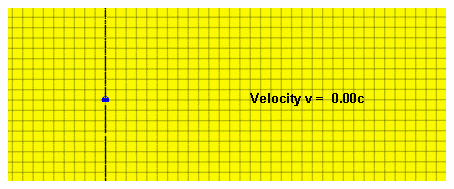
[http://en.wikipedia.org/wiki/File:XYCoordinates.gif] In a space ship traveling at the speed of light, what would happen if a laser was sent in the forward direction and another one in the backward direction? The reason for the question: using physics if a bullet is shot from a train its speed is added to the speed of the train, but I can't do this with light because nothing travels faster than the speed of light (which means the light must stay stationary at the front of the spaceship?!). If the bullet was shot in the opposite direction would the speeds subtract? (In the case of the light does an external observer see the light as stationary in relation to the spaceship?!). The speed of light (in a vacuum) is the same for all observers. This is what can be concluded from all the experiments done so far. Let's consider a ship whose speed is progressively increasing until it is very close to the speed of light, a value that it will never be able to reach. Let us also consider that this ship constantly emits a ray of yellow light forward and another one backwards. Let's consider 3 observers:
A - observer on ship
B - observer watching the spacecraft move away
C - observer watching the ship approach
A - the two beams of yellow light are emitted constantly, regardless of the ship's speed.
B - as the speed of the spacecraft increases, the light changes from yellow to red, moving later to the infrared band and later still to the radio wave band (that is, the wavelength of light increases progressively).
C - as the speed of the spacecraft increases, the light stops being yellow to become blue, passing later to the ultraviolet band and later still to the band of X-rays and gamma rays (that is, the wavelength of light progressively decreases).